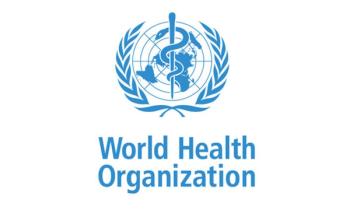
A Group of Antimicrobial Compounds Shows Novelty Action Against Multidrug-Resistant Gonorrhea
TAXIS Pharmaceuticals Chief Scientific Officer Ajit Parhi, PhD, discusses dihydrofolate reductase inhibitors as a novel approach to combat resistant Neisseria gonorrhoeae.
Back in May, TAXIS Pharmaceuticals announced it had received a $2.9 million grant, to be awarded over 3 years, from the National Institute of Allergy and Infectious Diseases. This grant allows the company to further advance research and development for its dihydrofolate reductase inhibitors (DHFRIs) as a novel approach to combat multidrug-resistant gonorrhea (commonly referred to as supergonorrhea), a rapidly spreading, deadly, and highly resistant strain of Neisseria gonorrhoeae.1
TAXIS is a clinical-stage company developing new classes of therapies to treat multidrug-resistant bacterial infections. Their investigational drug candidates include efflux pump inhibitors, DHFRIs, and FtsZ inhibitors and aim to combat antimicrobial resistance. 1
One of their investigational compounds, TXA 15054, is in the very early stages of development, and TAXIS Pharmaceuticals Chief Scientific Officer Ajit Parhi, PhD, discussed its novelty.
“TXA 15054 is from a compound series that targets bacterial DHFR…. Although DHFR is not a new target, it is important to remind the audience that trimethoprim, which is the only drug that targets DHFR, has absolutely no activity against gonorrhea. So our TXA 15054 and other compounds from that series target bacterial DHFR in a unique way, which is totally different from trimethoprim,” said Parhi in an interview with Contagion at the recent American Society for Microbiology Microbe conference.
In terms of safety and tolerability, there are some benefits associated with this group of compounds. “TXA 15054 and other compounds found in this series do not actually bind to human DHFR, so it can have a very big implication in the adverse effects or toxicity for patients,” Parhi said.
The STI’s Burden
This newer strain of this sexually transmitted infection (STI), also known as supergonorrhea, poses a public health challenge due to its resistance to the last line of an effective antibiotic, ceftriaxone. And the overall incidence rates of this STI are escalating worldwide. The World Health Organization (WHO) reports that in 2020, there were an estimated 82.4 million (range, 47.7 million-130.4 million) new gonorrhea cases among people aged 15 to 49 years worldwide, with a global incidence rate of 19 (range, 11-29) per 1000 women and 23 (range, 10-43) per 1000 men. Most cases were in the WHO African Region and Western Pacific Region.2
Although this strain has been seen mostly outside the US, in 2023, 2 cases of this pathogen were confirmed in the US and identified by the Massachusetts Department of Public Health.3
Massachusetts officials reported that clinicians were able to treat the patients successfully with ceftriaxone. However, this strain of the STI had reduced susceptibility to 5 antibiotic classes, including cephalosporins.3
Advancing Compounds
Parhi is optimistic his company will identify a specific agent to bring to the clinic. “I hope by the end of 2025 or mid-2026 we will be able to identify a preclinical candidate, and then within 6 months or so, we can identify a clinical candidate.... We are excited about this series of compounds,” he said.
References
1. TAXIS Pharmaceuticals announces $2.9 million NIH grant for its novel investigational therapeutic to combat antibiotic-resistant gonorrhea. Press release. TAXIS Pharmaceuticals. May 27, 2025. Accessed July 14, 2025.
https://www.prweb.com/releases/taxis-pharmaceuticals-receives-2-9-million-nih-grant-for-its-novel-investigational-therapeutic-to-combat-antibiotic-resistant-gonorrhea-302464710.html
2. Multi-drug resistant gonorrhea. World Health Organization. July 11, 2023. Accessed July 14, 2025. https://www.who.int/news-room/fact-sheets/detail/multi-drug-resistant-gonorrhoea
3. Landhuis EW. Multidrug-resistant “super gonorrhea” rallies multipronged effort. JAMA. 2024;331(20):1695-1697. doi:10.1001/jama.2023.15355
Newsletter
Stay ahead of emerging infectious disease threats with expert insights and breaking research. Subscribe now to get updates delivered straight to your inbox.


















































































































































































































































































